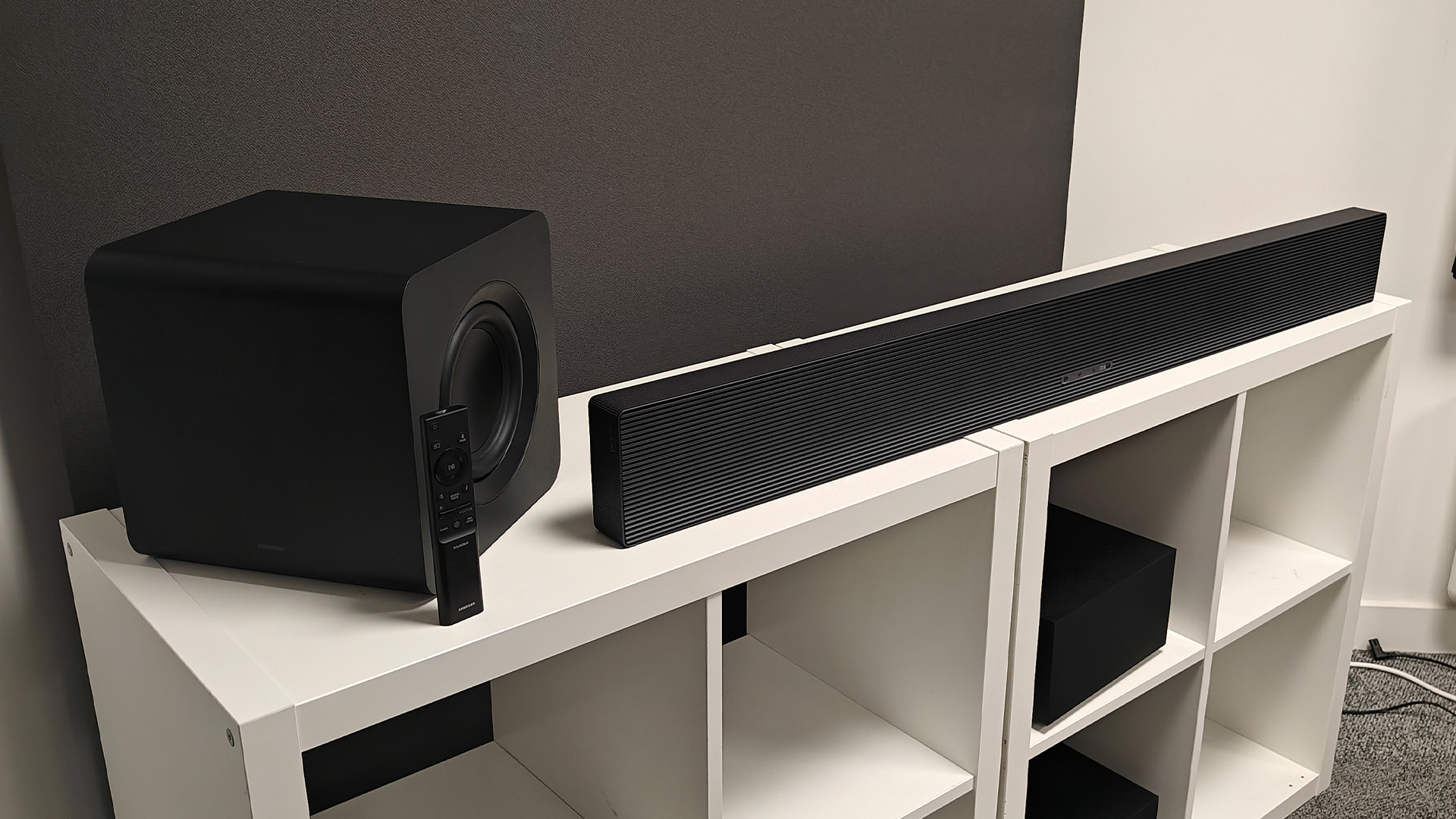10 of the best Björk tracks to test your hi-fi system
The bjest Björk bjangers

For audio reviewers and hi-fi technicians, Björk is something of a Godsend. Forging her own rather extraordinary sonic path that defies categorisation and sometimes even comprehension, the Icelandic powerhouse has melded genres as eclectic and far-ranging as experimental pop, industrial rock and post-classical, all while retaining her own signature voice and soul at the heart of almost everything she composes. Countless imitators have come and gone, but there’s only ever been one Björk.
It won’t surprise you to find out, then, that Ms. Gudmundsdóttir is extremely popular within the walls of our listening rooms. Not only does Björk possess a creative well of near-infinite depth and variety, but she’s also an artist with a keen ear for production and a real knack for arrangement.
Pinning down the ten objectively best Björk tracks is both impossible and redundant. What we’ve done instead is to whittle down a number of compositions we think will give your headphones or speaker system a really great workout. That's a much better use of everyone's time, after all.
Listen to the full Tidal playlist here
Bachelorette (Homogenic, 1997)
Like the relentless ebbs and flows of a restless ocean, the second track from 1997's Homogenic is a moody, volatile meditation on the tumultuous nature of love and attraction, all at once damning the entire concept while simultaneously seeing its protagonist surrender to its irresistible lure. Bachelorette crashes into life with startling authority and power and then slips under the waves for a quiet repose, before thundering with energy once more as the track’s irrepressible percussive twangs cause genuine goosebumps (provided you have the right equipment, that is).
Like a tightrope walker, your system will have to convey the delicate balancing act that lies at the heart of what is arguably the artist’s finest work, all at once organising and revealing the complexity of the musical arrangement while bringing to life the evocative vulnerability and strained passion of lyrics such as “I’m a tree that grows hearts, one for each that you take, you’re the intruder’s hand, I’m the branch that you break”. Stunning stuff worthy of the finest hi-fi you can get your hands on.
Army Of Me (Post, 1995)
While later efforts would see Iceland’s favourite daughter push the sonic boundaries into more sweeping orchestral numbers, 1995’s Army of Me was very much a reflection of the decade’s proclivity for hard-edged alternative bangers tinged with a no-nonsense, formidable sonic presence. Rock was still very much alive and kicking.
The latest hi-fi, home cinema and tech news, reviews, buying advice and deals, direct to your inbox.
An industrial piledriver of a track which commands you to "stand up" because "you've got to manage”, Björk's call to action should hit listeners like a sledgehammer to the cranium as the now-iconic refrain of “if you complain once more, you’ll meet an army of me” screeches above that thudding, head-jamming drum beat. The percussion should be clamorous, forceful and indomitable, but it’s Björk's urgent, unapologetic vocals that should always be taking centre stage.
I've Seen It All ft. Thom Yorke (Selmasongs, 2000)
Björk and Thom Yorke together in a single track must be most audio technicians' ultimate fantasy. Thankfully, the collaboration lives up to the hype as the experimental, occasionally misanthropic pair, instead of cancelling each other out, provide a track that sees two masters in dialogue with each other about the perceived value of their own personal experiences.
Aside from rising string passages and some rather glistening orchestral accompaniment, the real pleasure is simply hearing two very opposing vocal styles coexist within a single harmonious creation. If your system has the organisational chops, Yorke’s rather mumbled, muted style should anchor itself under the lively, sometimes erratic nature of Björk's own distinctive heart-pouring.
Jóga (Homogenic, 1997)
If we can be perfectly honest for a moment, this was the track which served as the inspiration for curating this list in the first place. During the testing of a five-star pair of floorstanders, the speakers’ sumptuous rendition of what is arguably the finest orchestral piece Björk has ever produced sparked a collective lightbulb within the halls of What Hi-Fi?.
And what a track it is, opened by rich, enthralling strings before the singer’s unmistakably confessional Nordic intonation really takes hold. Jóga is a handful for even the most sophisticated system and models thanks to its many converging elements and textures, all of which require not only their own respective spaces but a system which can bring the personalities and timbres of each individual facet without muddling and unwanted interesting.
Piece of cake.
Hyberballad (Post, 1995)
It may only be the second track from Björk's sophomore 1995 release Post, but Hyperballad really does feel like the culmination of so much which came before it. In many ways, it even feels predictive of much of the material that would follow. In sum, Hyperballad represents everything for which Björk has become known and beloved in a single record.
It would take an entire article of its own to detail the merits of Hyperballad and the myriad elements which make it a perfect test for your system. Suffice to say, you’ll want to be on the lookout for the detail and staccato of the static-esque lower-range production, the intensity and timbre of the aching strings, the dynamic peaks and troughs as the musical landscape waxes and wanes and, of course, the soaring emotions of the vocal delivery above all else.
You might need more than a single listen for this one.
It’s Oh So Quiet (Post, 1995)
Keen on testing your headphones’ dynamic range? One track springs to mind…
It’s Oh So Quiet is a bizarre trampoline act of a record, springing back and forth between hushed, muted and intimate passages in which Björk seems to be whispering directly into your ears, before all hell is let loose and the music crashes into a cacophony of sound and life which, if you’re not careful, can cause the head to throb and the heart to bounce against the ribcage in surprise.
Those, rather counterintuitively, are exactly the physical reactions you’ll want It’s Oh So Quiet to elicit when played through a pair of headphones or speakers capable of doing it justice. Less capable gear tends to make musically expressive performances feel like dull, slightly flattened sonic landscapes. Here, you want those peaks and troughs to be as drastic as Mount Everest plonked next to the Mariana Trench.
Unravel (Homogenic, 1997)
In contrast to much of the complex, highfalutin arrangements which so keenly characterise Homogenic as an album, Unravel is a far simpler, far more intimate affair which rises and falls depending on a speaker or headphones' capacity to burrow into Björk's head and heart and reveal the emotions held within.
Sparse instrumentation, including hesitant strings and a muted organ, provides accompanying support, but it is Björk's lyrics and vocal delivery which must be conveyed with the most intimate emotional and dynamic understanding in order for the yearning and emotional instability of Unravel to really shine through. The sibilance of the whispering “s” sounds, the occasional warble and vocal crack, even the slight inhalations of breath; all must be communicated to the listener without uniformity or emotional remoteness.
Stonemilker (Vulticura, 2015)
The slow, grave baroque ballad Stonemilker sees its protagonist at her emotional rawest, something which should come as little surprise considering the track's wider context. Released as the heart-breaking apex to 2015's Vulticura, the album which followed Björk's tricky breakup with American artist Matthew Barney, it's a splash of pained colours cast upon a decidedly barren musical canvas. The results, as you'd imagine, are deeply affecting.
Besides the full strings, remorseful lyrics and that unmistakable vocal delivery, it's the space that really matters when it comes to what is arguably Björk's most soul-crushing release to date. The accompanying music video (a sort of 360-degree virtual reality experience) sees our heroine standing alone on a flinty beach as the sun descends, a setting which seems apposite considering how the song itself is designed to be heard. Just like the volatility of the waves, the stillness of the sky and the endless spread of the sands, each musical element within Stonemilker should find its own space when played via a competent, technically adept sound system.
Pagan Poetry (Verspertine, 2001)
2001's Vespertine continued to reflect its composer's gradual ascent up the avant-garde mountain, incorporating more digital and electronic sounds while pushing the boundaries of Björk's nascent progressive tendencies. It isn't necessarily the artist's most famous record, but it might well be her most acclaimed and boundary-pushing release ever.
Pagan Poetry, the album's fifth track and second single, is an unquestionable highlight. The song's sonic landscape is an enchanted forest of glistening, metallic percussive textures underpinned by heavy, assertive drum kicks and the occasional shimmering hint of a harp. The effect should be ethereal and enchanting, but beware of lesser equipment which will turn these nebulous, occasionally formless sounds and textures into a muddled, soupy mess.
Human Behaviour (Debut, 1993)
The snappy, strict drumbeat of Human Behaviour is just the first hurdle in what is actually a speaker system’s equivalent of a military obstacle course. Yes, conveying that rhythm with spark and drive is important to anchoring the entire composition while keeping it moving in the right direction, but it isn’t the trickiest facet that needs to be nailed perfectly in order for Human Behaviour to really be done justice.
Again, it’s revealing the gymnastics of Björk’s ever-shifting, multi-layered vocal delivery that your equipment should really revel in revealing. Almost line-by-line, sometimes even word by word, the Icelandic chanteuse’s delivery switches and flits, bouncing between staccato assertions (“definitely, definitely, definitely”) to voice-cracking highs (‘then all of a sudden turn happy”) before melding into a sort of Cockney spoken word address (“Oh, to get involved in the exchange”). A perfect vocal test for any headphones or set of speakers.
7 best Pink Floyd tracks to test your hi-fi system
19 best British rock songs to test your hi-fi system
The ultimate music tracks to test your hi-fi - all of our curated playlists in one place

Harry McKerrell is a senior staff writer at What Hi-Fi?. During his time at the publication, he has written countless news stories alongside features, advice and reviews of products ranging from floorstanding speakers and music streamers to over-ear headphones, wireless earbuds and portable DACs. He has covered launches from hi-fi and consumer tech brands, and major industry events including IFA, High End Munich and, of course, the Bristol Hi-Fi Show. When not at work he can be found playing hockey, practising the piano or trying to pet strangers' dogs.
